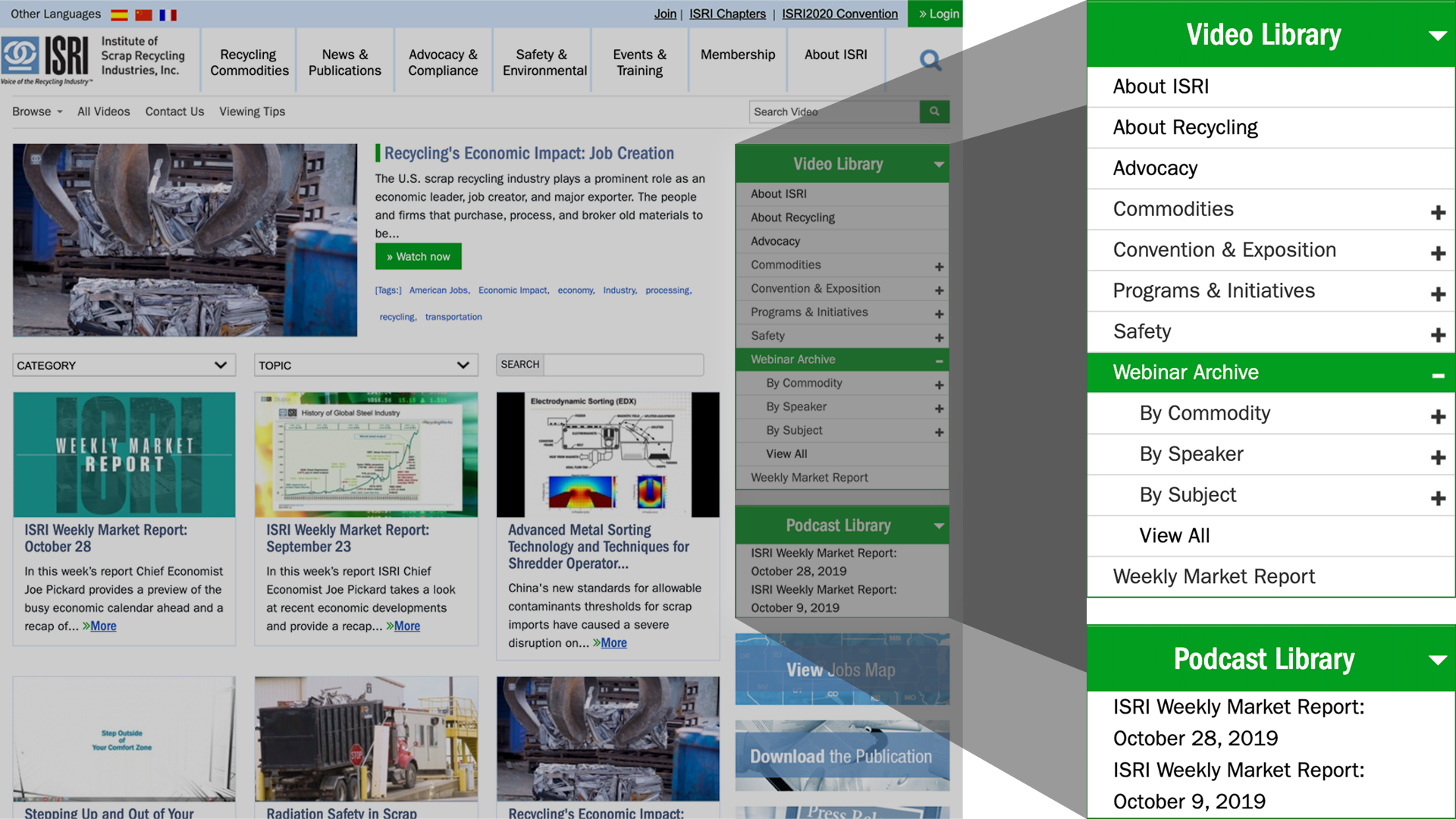We get our inspiration from working with associations and helping them leverage the power of video and multimedia to become more profitable, purposeful and predictable. The lessons we've highlighted in the book are featured on this page with examples. Demonstrating that associations can and should use video and multimedia strategically to improve engagement. When engagement improves, so will retention, recruitment and revenues.

The Association of Nutrition & Foodservice Professionals (ANFP) exemplifies the digital-first mindset with their industry insights series. Industry research that would have previously been circulated to members as dense written reports are now broken-up and distributed in bite-sized videos. As a result, engagement with this research has never been higher. View ANFPtv's Industry Insights Series

The Material Handling Industry (MHI) does an annual research project with Deloitte & Touche to stay on top of the key topics that will influence their members’ future success. From Robotics to Predictive Analytics to Sensors and the Internet of Things, MHI releases micro-learning videos on these key topics every two weeks to keep members informed, educated and inspired, all year long. This strategy complements their conferences, magazines and newsletters with rich and relevant, on-demand learning. MHI ensures that their content delivers what members are looking for and is aligned with their why!

The Association of Women's Health, Obstetric and Neonatal Nurses (AWHONN) repurposed their conference sessions (on average one-hour-long) into two additional formats. First, 2 to 3-minute, micro-learning video that would inform, educate and inspire members to click through to the full session recording if they needed more detail. Secondly, to promote the content on social media for members and prospective members, a 30-second micro-marketing format was used to drive people to the AWHONN platform, where they could view the micro-learning and full-session in the AWHONN brand environment. Only members are allowed into the full-session content, demonstrating another value of membership. Non-members see a ‘click-to-join’ option where they can learn more about AWHONN and becoming a member. Why is this important? It is taking one piece of content - a conference session - and makes it a tool for recruitment, retention and revenue generation. It is simplifying the journey between the awareness and conversion, and it elevates the value of membership for all.

The Material Handling Equipment Distributors Association (MHEDA) understands how important it is to engage young people. Not just for membership, but to fill the growing demand for careers in the supply chain. To help their members, MHEDA created a video that speaks to the vast array of careers that are available and allowed members to use this video on their website to help them with their recruitment challenges. MHEDA not only uses video to educate members, it has now become a new member service. When associations help members with their business problems, you truly add value. See how MHEDA uses video as a member service

Many associations share too much of their full content on social media, allowing artificial intelligence to learn more about their members then they do. By doing this, they are funding their competitor. Realizing this, but also understanding that they shouldn’t ignore social media as a recruitment tool, the American Society for Quality (ASQ) releases a short (30-seconds or less) episode to Facebook, Twitter and LinkedIn. This post drives traffic to a micro-learning (3 to 5-minute educational episode) that they post on their website. The social media, or “micro-marketing,” releases have created awareness and traffic back to ASQ’s environment where prospective members can learn and engage with them directly.

The Entrepreneurs Organization of Canada (EO) recently faced two issues. Their conferences featured valuable education and updates, but only a portion of members could attend. They were also looking for new ways to recruit qualified members. This led them to adopt a multimedia content strategy that extended budget and achieve a high ROI. They implemented a ‘Conference All Year Long’ model that converts a recorded conference session into several digestible assets. EO promoted the micro-learning content to members with easy log-in access to the full video, podcast or slides. Shorter versions were posted on social media to drive new viewers to the micro-learning page and create conversion opportunities. Non-members trying to access full content were redirected to learn more about EO membership. Creating one content model that works for both retention and recruitment.

The Council of Supply Chain Management Professionals’ (CSCMP) annual conference is an important event for the association and its regular sponsors. They want to position themselves as trustworthy allies. Unfortunately, lunch and lanyard sponsorships can only move the needle so far. CSCMP found that offering paid positions in a video recap was the ideal solution. This allows for sponsors to be seen as thought leaders in the eyes of members and delivers on lasting, measurable ROI. View the full landing page and sponsor banners

The American Association of Nurse Anesthetists (AANA) supports the needs of advanced practice nurses with online video and audio based continuing education. To take friction out of the buying process for continuing education, AANA adopted a subscription or “Netflix-styled” pricing model to their continuing education programs. The goal is to make it easier for members to engage with and consume continual learning opportunities. View the audio and video Knowledge Network from AANA.

A shift in demographics and technology created an opportunity for Mortgage Professionals Canada (MPC) to modernize the way they communicate important messages such as, advocacy issues. Today’s mortgage broker is younger, and busier than ever. Leading with video instead of print helps MPC deliver on its promise to educate and prove to membership their voice is powerful.

We have provided a free tool to help organizations shift from departmental and medium-centric planning to holistic and association wide content strategy. This tool is called the Association TV Online Playbook and takes less than 30 minutes for you and your colleagues to identify content opportunities in each department. A video-first planning model lowers the overall cost of production, drives multimedia assets and allows for omnichannel distribution and mobile consumption.
We hope this inspires your organization to move from Analog to Digital and leverage the practices that will improve your 3R’s - retention, recruitment and revenue.

The Institute of Scrap Recycling Industries’ (ISRI) video and multimedia platform, ISRI Studios is a one-stop portal. Members no longer have to know search in separate places for video, podcast or webinar content. They simply go to one place and find what they need. Organizing content by topic, speaker, theme (not by date) has made is easier for ISRI members (and prospects) to find the value they are looking for. This ultimately makes it easier for them to consume and act on content – which drives ROI. ISRI creates a community and promotes recurring visits for new content such as, their Weekly Market Report, webinars, podcasts and more. The traffic also generates monetization opportunities for ISRI through sponsorship, advertising and pay-per-view.